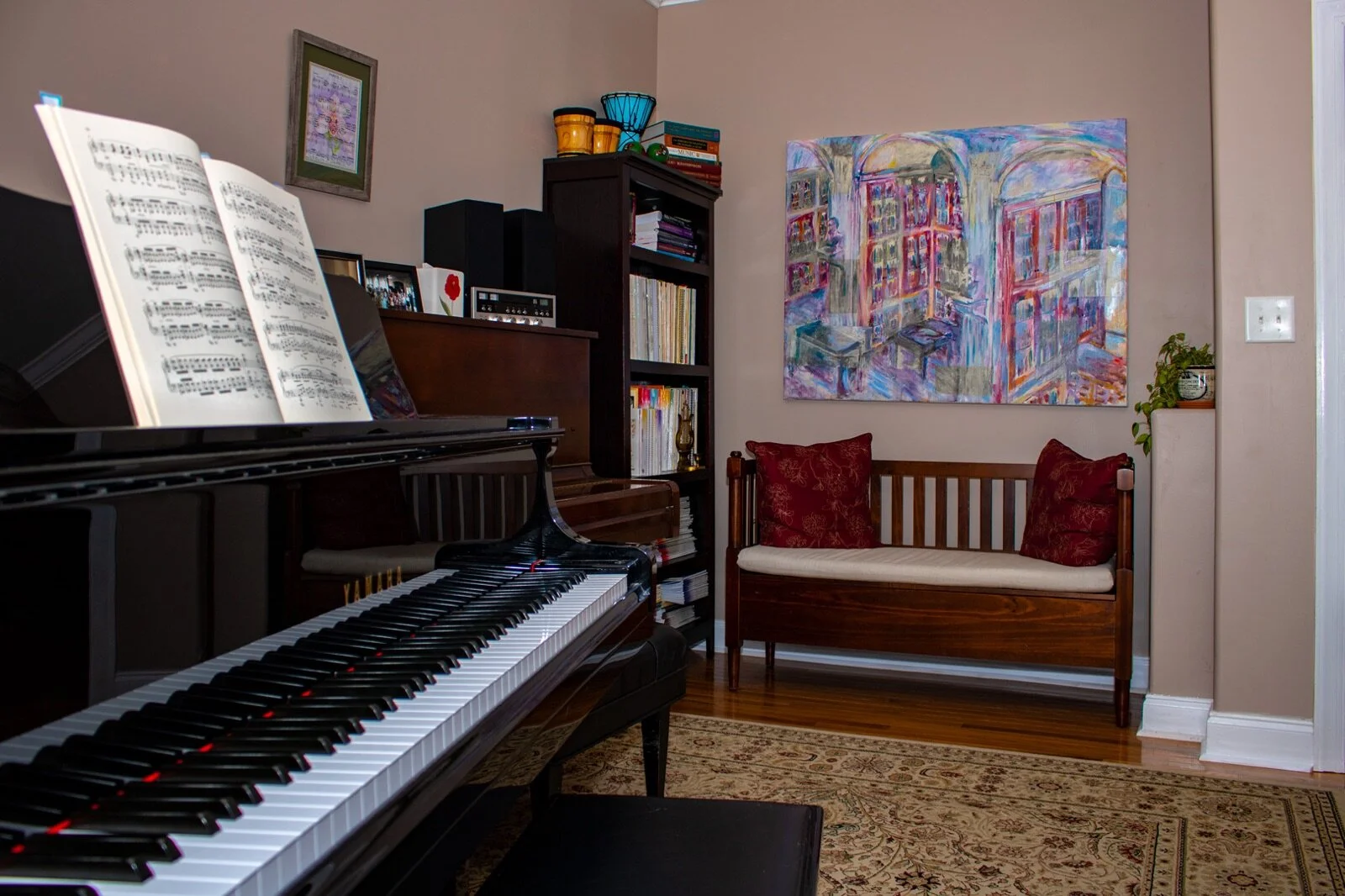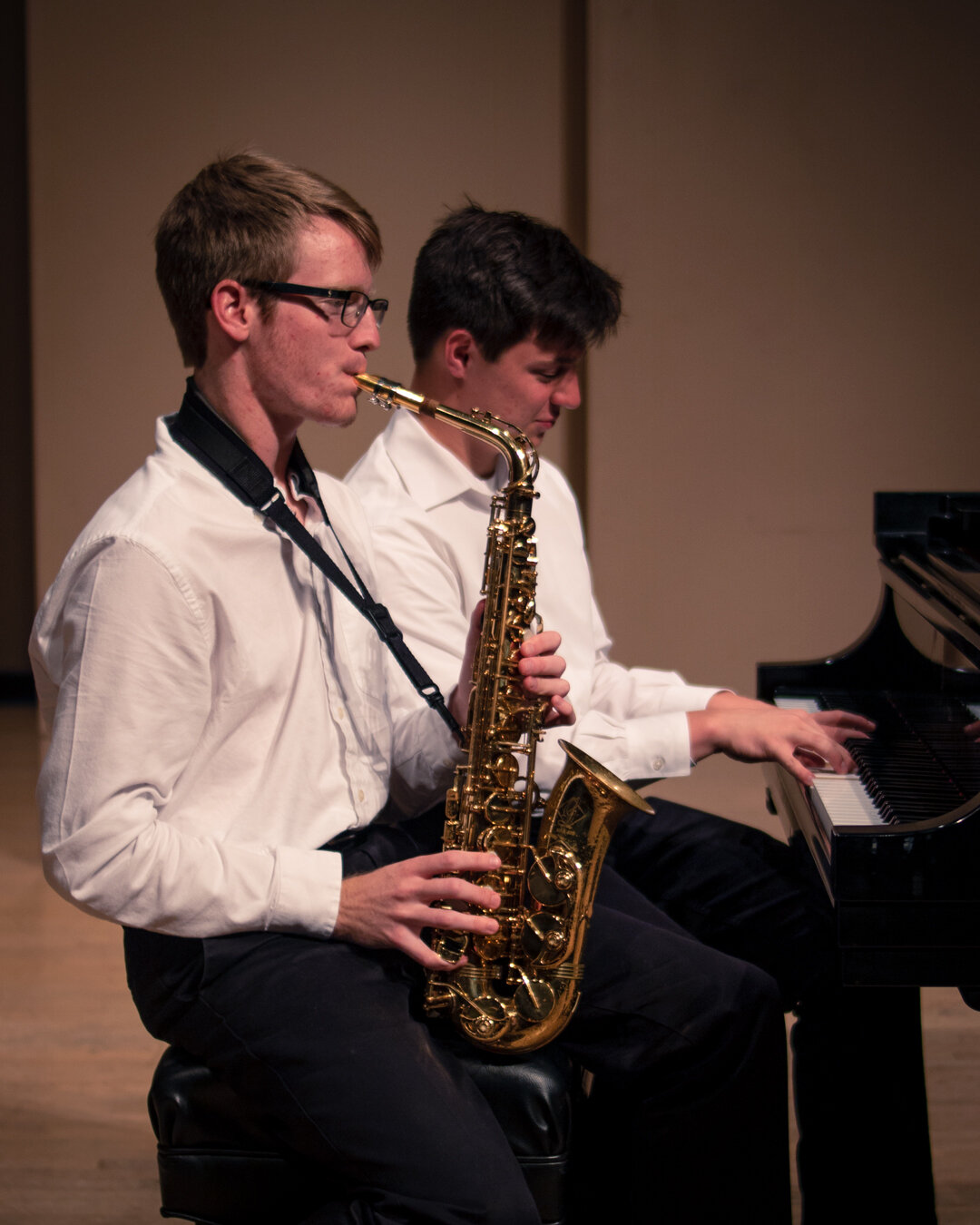Teaching from Home
A Very Candid Account of the Pros and Cons
Should I develop a home studio or rent a space? Is it a good idea to grow my studio within a church building or to work for a private academy? Should I make my academy a nonprofit? Should I build an extra room in my house or enclose my garage? Should I... should I...
What a terrible struggle it can be to decide on the best location for your studio! I myself read countless blogs and perused every resource I could find while wrestling with this issue. I visited various locations and held contracts in my hand multiple times, eager to sign on the dotted line. I fantasized about the possibilities and debated each scenario in my head for months. I think back on the many friendly arguments I had with my husband. After all, having a studio in the house is a family affair. And, as many women do, I had to make a decision while trying to balance my life as a mom with my professional aspirations.
The pedagogy books and blog articles do a great job at outlining the pros and cons of each option. Yet, I want to share with you my frank and open conclusions, gained from decades of teaching in different settings. These are some of the things I wish I had known right from the start. I hope this 5-part blog article helps you in your journey to establish your ideal studio and to make peace with your chosen location.
PART 1: Teaching at an Academy
Most teachers have to work at a music academy at some point in their careers. It seems to be one of the only available jobs for an aspiring pedagogy major without much experience. Over my life, I have taught in many such places, each of them with different policies, atmospheres, and priorities. Yet, these were some of their commonalities:
PROS
You do not have to worry about marketing, and you can easily be booked, even if you are new to a community.
You are not responsible for cleaning or for the many expenses required to keep the location. However, you can benefit from the organization’s place and position in the community.
It can be very fun to work with other musicians and to hear yourself surrounded by lots of activity, as distracting as it can be at other times.
It is easier to pair your students with other instrumentalists to form duets and ensembles.
You can share recitals with other teachers, making preparation a lot easier. Expenses and arrangements are taken care off by the academy. This allows you to present only a few students rather than having to fill the whole concert with your studio.
The teaching facilities are always ready for you to just show up and teach!
Instruments are provided (although they are often far from ideal).
CONSYou are not able to interview students and decide if they are a good fit to your teaching style or if you are the best teacher for their needs. This can be incredibly stressful and lead to many difficult teaching situations, especially for young teachers.
Sometimes academies, especially those owned by music stores, see the teaching side as a secondary addition to their retail store. Teachers are not always supported as much as they might like, which can cause them to feel unappreciated or disconnected.
You lose 20-40% of your hourly teaching revenue to the store or academy owner. This is a huge percentage, particularly considering the standard teaching fees.
You do not have a say in decor, room organization, usage of common spaces, etc.
Studios are often shared, making it difficult to have handy everything that you might need to conduct a great lesson.
Noise is a huge problem! Commercial studios are popular locations for drum and guitar lessons. It is not uncommon to hear another room’s jazz saxophone or rock drum set while you are trying to teach a Bach minuet!
It is not easy to have a conversation with parents, as they often deal with the store clerks rather than you. The end result is very limited direct contact and communication with your students’ families.
You are not able to enforce your own studio policies, but you have to abide by the store or academy’s regulations.
Some academies embrace a particular methodology or teaching curriculum, which might not be the one you are more proficient at teaching.
You are often pushed to meet a quota of students and to teach during times that are most convenient for the store or academy, not necessarily for yourself.
You do not have any decision making power over recitals and events, which means you often have to participate with inexperienced teachers who might not have the pedagogy to properly prepare the students.
Conclusion: This is a great first step if you are new to teaching or have just moved into your community. Connecting to a local retail store or academy can help you develop goodwill within your area and can do wonders for your ability to become independent later. Having so little decision making power can be a good thing when you are just beginning your teaching career and needing guidance and practical experience. It will help you mature into a confident teacher and give you the backbone that you need to design and manage your ideal studio on your own.
Click here if you want to read a different segment of this blog post on Teaching From Home:
Part 1: Teaching at an Academy
Part 2: The Particularities of Teaching for a Nonprofit
Part 3: Establishing Your Studio Within a Church
Part 4: Renting Your Own Space to Teach
Part 5: Teaching from a Home Studio
My now graduated student Jared and his friend performing a fabulous jazz duet as the ending of one of our recitals.

